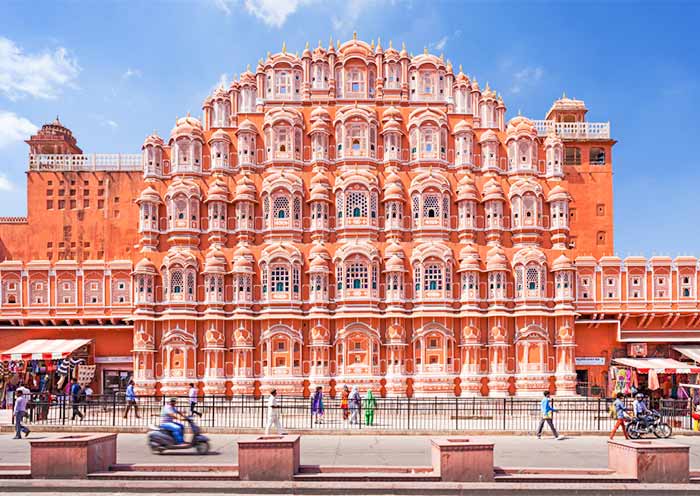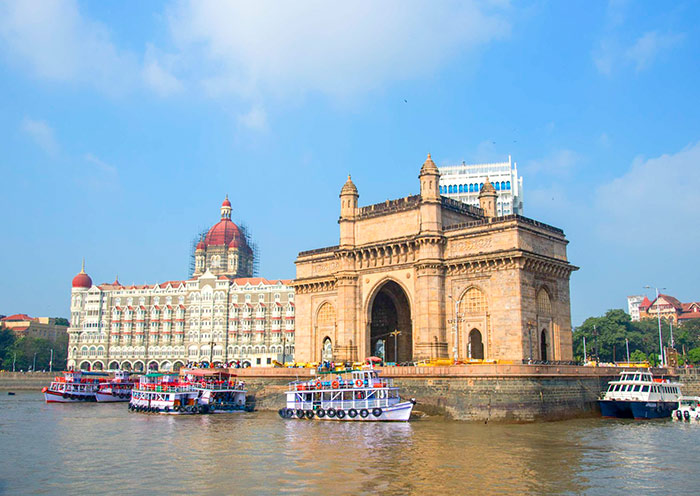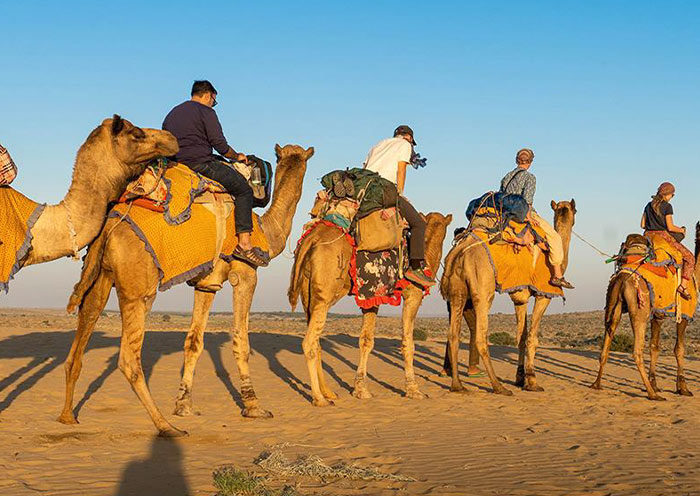Planning your first trip to India? Here's your India Travel Tips for First-Timers.
India, a fascinating paradox to travel to, is known for its duality. India offers a unique blend of chaos and harmony, bustling activities and moments of inner peace, shady corners and breathtaking natural beauty. India can be both charming and, at times, daunting for tourists, especially for those visiting India for the first time.
Still, we all yearn to embrace enchanting India, for the charms you can only find during India Travel. That's where our India Travel Tips come in handy. This includes the "India How to Guide" on exploring its iconic attractions, Taj Mahal, Red Fort & more; experiencing the rich biodiversity, particularly at Ranthambore National Park, immersing in its vibrant culture, and discovering ancient heritage sites. Planning a trip to India can be overwhelming, especially for foreign travelers who are visiting India for the first time. Navigating the vast and sometimes confusing public transportation system, finding India Accommodation, addressing potential safety concerns, and crafting itineraries with countless attractions in Delhi, Agra, Jaipur, Jodhpur & more.
So, how to prepare for a trip to India? There are crucial things you should know and essential tips to consider, such as visa and travel safety. These aspects deserve your focused attention when planning a trip to India. Additionally, there are other tips that can significantly enhance your travel experience, including selecting the right time to visit, choosing the most Things to Do in India, deciding when to travel, crafting your Itinerary, and even extending your trip to other Himalaya destinations like Nepal, Bhutan, and Tibet.
If you are planning your first trip to India, do not miss out on our easy-to-read India Travel Tips . This travel tip list comes with travel tips your travel experience in India can be so smooth even if you are visiting India for the first time!

"Excellent Tour, best experience"
"A unique experience despite a difficult context thanks
to an experience team of organisers"
1. What are the top attractions to visit in Delhi?+
2. What is the ideal duration for a Delhi Tour?+
The ideal duration for a Delhi Tour depends on your preferences and the places you wish to explore. A minimum of 2-3 days is recommended to cover the major attractions and get a glimpse of the city's cultural and historical heritage. However, if you want to delve deeper and experience the city in more detail, a 4-5 day tour would be more suitable.
3. Are Delhi Tour Packages customizable?+
Yes, many Delhi Tour Packages can be customized according to your preferences. You can often tailor the itinerary, duration, and inclusions based on your interests and requirements. It is advisable to discuss your customization requests with the AOT tour operator to create a personalized Delhi Tour that suits you best.
4. What is the best time to visit Delhi?+
5. What is the food like in Delhi?+
6. Are Delhi Tours suitable for solo travelers?+
Yes, Delhi Tours are suitable for solo travelers. Joining a guided tour allows solo travelers to explore the city with the convenience of an organized itinerary, transportation, and the opportunity to meet fellow travelers.
1. What are some packing tips for a North India tour?+
Here are some packing tips for a North India Tour:
2. What are the different types of North India tours available?+
There are many different types of North India Tours available to suit different interests and budgets. Here are a few popular options:
3. What is the best time of year to travel to North India?+
The best time to visit India is between October and March, when the weather is more likely to be warm, sunny, and dry. During this time, the north offers clear blue skies. However, December and January are much cooler, with potential fog, while the higher Himalaya can be very cold, but with clearer mountain views.
Here's a breakdown of the seasons:
4. Why should we visit North India?+
North India enchants visitors with its vibrant tapestry of reasons to visit. Here are some highlights that might pique your interest:
5. Which is more beautiful north or south India?+
It's tough to say definitively which is more beautiful, North or South India, because beauty is subjective and depends on your preferences. North India has more splendid palaces, temples, and forts with an imperial style and noble temperament. Conversely, south India is located in low latitudes and embraced by the sea. The tropical landscapes and beaches are its highlights. Architecture in the south is more colonial because of its colonial history.
Here's a breakdown of the highlights of each region to help you decide which might be more appealing to you:
North India:
Grand historical monuments: The Taj Mahal, forts, palaces (Agra Fort, Jaipur City Palace)
Spiritual significance: Varanasi, Rishikesh on the Ganges River
Diverse landscapes: Himalayas, Thar Desert
Vibrant culture: Bustling cities, colorful festivals
South India:
Relaxing beaches: Kerala backwaters, Goa coastline
Lush greenery: Hill stations, tea plantations, spice plantations
Dravidian architecture: Temple architecture with towering gopurams
Unique cultures: Diverse traditions, laid-back atmosphere
Here are some additional factors to consider:
Weather: North India has cooler winters but hotter summers. South India is mostly tropical with high humidity.
Cuisine: North India is known for richer curries and tandoori dishes. South India features lighter fare with rice, lentils, and coconut.
Activities: North India offers historical exploration and adventure activities in the Himalayas. South India is ideal for relaxation, Ayurveda treatments, and enjoying nature.
Ultimately, the best way to decide is to research specific destinations within North and South India that appeal to you and create an itinerary that suits your interests.
6. How large are the India group tours?+
Our India group tours are designed for small groups, typically ranging from 1 to 12 travelers. This ensures a more personalized experience, allows for flexibility in the itinerary, and facilitates interactions among group members and with locals.
7. Are meals included in the tour package?+
Most of our tours include breakfast at the hotel. We strive to introduce our guests to the diverse and flavorful cuisine of India in a variety of settings, from local eateries to fine dining restaurants. Specific meal inclusions will be detailed in your tour itinerary.
8. Do I need a visa to travel to India?+
Yes, most foreign nationals require a visa to enter India. E-visas are available for tourists from many countries and can be applied for online. Asia Odyssey Travel can provide guidance and assistance in the visa application process to ensure a smooth preparation for your trip.
9. Is it safe to travel in India?+
India is generally safe for travelers, especially when part of an organized tour. We take the safety and security of our travelers very seriously and are continually informed about local conditions. Our experienced guides and drivers also contribute significantly to ensuring a safe travel experience.
10. Can you accommodate special dietary requirements in Inida Group Tours?+
Absolutely. India's culinary diversity caters well to various dietary preferences and restrictions, including vegetarian, vegan, gluten-free, and others. Please inform us of any dietary needs in advance, and we will ensure that your requirements are communicated to our hosts and restaurants.
11. What type of accommodations can I expect?+
On India group Tours, we offer a variety of accommodation options tailored to suit different preferences and budgets, ensuring your stay is comfortable, authentic, and memorable. Our selection includes 3, 4, and 5-star hotels, each carefully chosen to enhance your travel experience:
12. What are the must-visit destinations in India?+
India is a country with a wealth of incredible destinations to explore. Here are some must-visit destinations in India:
Learn more about Tourist Places in India >>
13. What is the best time to visit India?+
The best time to visit India depends on the region you plan to explore. Generally, the winter months (October to March) are preferred as the weather is pleasant in most parts of the country. However, specific regions like the Himalayas are best visited during the summer months (April to June) when the weather is more favorable. The monsoon season (June to September) can be a good time for exploring certain regions, but it's important to check weather conditions and plan accordingly. Learn more about Best Time to Visit India >>
14. What are the visa requirements for visiting India?+
Most travelers require a visa to enter India. The process and requirements vary depending on your nationality. It's advisable to check with the Indian embassy or consulate in your country or visit the official website of the Indian Ministry of Home Affairs for detailed information on visa requirements and the application process. Or, contact our travel experts for more info about India travel.
15. What are some popular festivals in India?+
India is known for its vibrant festivals. Some popular ones include Diwali (Festival of Lights), Holi (Festival of Colors), Navratri, Durga Puja, Eid, Christmas, and Pongal. These festivals vary in different regions and offer a unique cultural experience with music, dance, traditional rituals, and delicious food.
16. What is the local cuisine like in India?+
Indian cuisine is diverse and renowned for its flavors and spices. Each region has its own specialties. Popular dishes include biryani, butter chicken, dosa, samosas, paneer tikka, and various types of curry. Vegetarian and vegan options are widely available. It's recommended to try local street food, but make sure to choose reputable vendors to ensure food safety and hygiene.
17. What is the currency and exchange rate in India?+
The currency in India is the Indian Rupee (INR). The exchange rate against other currencies fluctuates, so it's best to check with reliable sources such as banks or currency exchange offices for the most accurate rates. It's advisable to carry a mix of cash and use debit/credit cards at ATMs or establishments that accept them.
18. Are there any specific cultural norms or customs I should be aware of while traveling in India?+
India has a rich cultural heritage, and it's important to be respectful of local customs and traditions. Dress modestly, especially when visiting religious sites. Remove your shoes and cover your head if required. Seek permission before taking photographs of individuals, particularly in rural areas. It's also polite to greet locals with a namaste (folded hands) and be aware of specific customs and etiquette in different regions.
19. What is the Golden Triangle in India?+
The Golden Triangle refers to the tourist circuit comprising three of India's most iconic cities: Delhi, Agra, and Jaipur. This route forms a triangle on the map of India and is celebrated for its rich cultural heritage, architectural marvels, and historical significance.
20. How long does a typical Golden Triangle tour take?+
A typical India Golden Triangle tour usually spans 6 to 7 days, allowing sufficient time to explore the major attractions in each city. However, itineraries can be customized to shorter durations or extended to include additional destinations.
21. What are the must-visit attractions in each city on the Golden Triangle Circuit?+
22. Can the tour be customized to include other destinations in a India Golden Triangle Tour?+
Absolutely! Many travelers choose to extend their Golden Triangle tour to include other destinations such as Udaipur, Varanasi, Ranthambore National Park, or even a side trip to Nepal or Bhutan. Customized tours can be arranged to suit your interests and time frame.
23. What are the must-visit attractions in Jaipur?+
The must-visit attractions in Jaipur include the Amber Fort, City Palace, Jantar Mantar, Hawa Mahal, and the Jal Mahal. The vibrant bazaars such as Johari Bazaar and Bapu Bazaar are also not to be missed for those interested in local crafts and shopping..
1. What are the must-visit places in India and Nepal?+
2. How long does a typical India Nepal Tour last?+
The duration of an India Nepal Tour can vary, but a common duration is around 10-15 days, allowing for a comprehensive exploration of both countries.
3. What is the best time to visit India and Nepal?+
4. What are the transportation options between India and Nepal?+
5. What is the currency used in India and Nepal? Can I use credit cards?+
6. Are there any cultural customs or etiquette I should be aware of while visiting India and Nepal?+
Yes, it is important to respect local customs and traditions while visiting India and Nepal. Dress modestly, especially in religious sites. Remove your shoes before entering temples or homes. Ask for permission before taking photographs of people. It's also polite to greet people with "Namaste" and use your right hand for greetings and eating.
7. What are the must-visit places in India and Bhutan on these tours?+


























Create a tour based truly on your preferences, including all aspects of your travel in the destination